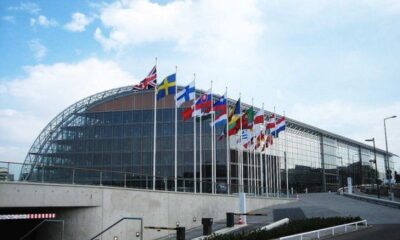

Invest
Call to Scale Up Climate Finance after Paris Summit – 3 Point Plan to Convert INDC Goals into Climate Investment Pipeline
A worldwide group of global climate finance organisations has issued a call for coordinated action to scale up climate investment ‘infrastructure’ and financial flows following the COP21 Paris Conference in early December.
Reflecting the growing debate around conversion of national INDC commitments into targeted investment, the group has put forward a three point framework of measures to encourage long term capital allocation from financial markets alongside public finance.
The plan seeks to leverage the national priorities and accompanying data contained with each INDC to help build investment pipelines that have a climate policy rationale, regulatory support and the underlying features and transparency required for markets and finance providers to make multi-billion, long-term investment decisions.
The call is for three core actions:
Establishing detailed “Climate Investment Plans” (CIPs) at a country level, based on the country’s intended INDC actions as submitted pre-Paris. These CIPs will set out “investment ready” commercial projects alongside proposals for concessional financing.
Backing these CIPs – and all other climate finance initiatives – with improved information, including through the creation of standard data on climate projects and finance.
Establishing a global network for climate investment, housing essential climate finance infrastructure and bringing together major participants including market research, policy makers and intermediaries as well as institutional investors, in active partnerships to facilitate transaction flows.
The 3 Point Plan has attracted support from Rachel Kyte, former World Bank Group Vice President and Special Envoy for Climate Change:
“The UN has calculated that the INDCs put us on track for 2.7 degrees warming – better than where we were headed but still perilously high. However, to turn them from words to low carbon growth, jobs and opportunity, we have to mobilize the finance needs laid out and put in place the sensible macroeconomic and fiscal policy packages that support this new trajectory.”
“Alongside those, we need to create infrastructure for the climate finance sector itself to work effectively. I therefore commend this initiative as the means for finance practitioners to make progress in promoting deal flows at both global and country levels.”
Tracy Cai, Co-founder and CEO of SynTao Green Finance: “None of the actions we are calling for are new as such. They all build on work that is already being done. But together they create a platform for people to work together at scale, on the basis of better data, more visibility of investment pipelines, and better planning and dialogue. They are vital infrastructure that needs to be plugged in for the funds to flow.”
Nick Mabey, Chief Executive and a founder director of E3G cited the significant gaps in data and a lack of understanding of the investment priorities which would meet each country’s INDC plans:
““There’s a lot of work needed,” he said, “but the country INDC submissions are a massive step forward. The data they provide is a compass pointing the way to climate mitigation and adaptation solutions. We can now map out a “bottom up” pipeline of projects. With both compass and map we know where money is needed to determine the most appropriate forms of financing.”
Assaad Razzouk, CEO Sindicatum Sustainable Resources, a Singaporean clean energy company noted how demonstrating success in financing would increase ambition:
“Climate Investment Plans are a vital window to the world for finance at country level, and a vital tool for increasing ambition on mitigation targets over time. A Paris climate agreement, no matter how tentative, will involve more than 160 countries publishing ‘low-carbon business plans’ for their economies, describing what each will do to help limit global warming.
“The plans, based on the INDCs, are the driving force of COP21 and represent both a development pathway and a multi-trillion-dollar investment opportunity for the private sector if they are clearly delineated. If it can be shown, through transactions getting done, that public and private sources of finance can be mobilised at scale for the implementation of these plans, we will get confidence that much more can be achieved than a Paris agreement, on its own, will probably yield.”
Speaking about the call for a climate investment network, Farhana Yamin, CEO and Founder of Track:“Establishing a climate investment network would create a real catalyst to effective deal flow. Far beyond just a “talking shop”, its sole objective would be to scale up the flow of transaction opportunities – whether these be concessional or commercial.
“Looking across at the “impact investing” world, we can see a possible model in the Global Impact Investing Network, which was only established 6 years ago but already has over 200 members – and they’re not just investors, but all kinds of stakeholders getting things moving forward.”
James Cameron, Chairman, Overseas Development Institute: The initiatives in the Call to Action create coherence in climate financing. They complement and go beyond many past approaches, in that they focus 100% on promoting transaction flows. And flows right across the spectrum, from grants to purely commercial transactions.
Amal-Lee Amin, Chief of the Climate Change and Sustainability Division, IDB: “The Inter-American Development Bank (IDB) welcomes this Call to Action and its focus on mobilizing public and private sources of finance for implementation of countries’ INDCs. The Bank has worked closely with many LAC Governments in the design and development of the national climate strategies and plans that underpin these INDCs. Coming out of Paris it is essential that these commitments are translated into investment plans and we look forward to collaborating with others to mobilise the scale and scope of finance that will be required.”
Virginie Pelletier, Head of Sustainable Investment and Finance, BNP Paribas CIB: “Defining Climate Investment Plans of countries will greatly assist in focusing the international and domestic capital markets on practical investment needs and opportunities associated with financing the economic transition to a low carbon economy, and thus to further sustainable economic development in the coming years.”


 Environment10 months ago
Environment10 months agoAre Polymer Banknotes: an Eco-Friendly Trend or a Groundswell?

 Environment11 months ago
Environment11 months agoEco-Friendly Home Improvements: Top 7 Upgrades for 2025

 Features9 months ago
Features9 months agoEco-Friendly Cryptocurrencies: Sustainable Investment Choices

 Features10 months ago
Features10 months agoEco-Friendly Crypto Traders Must Find the Right Exchange





























